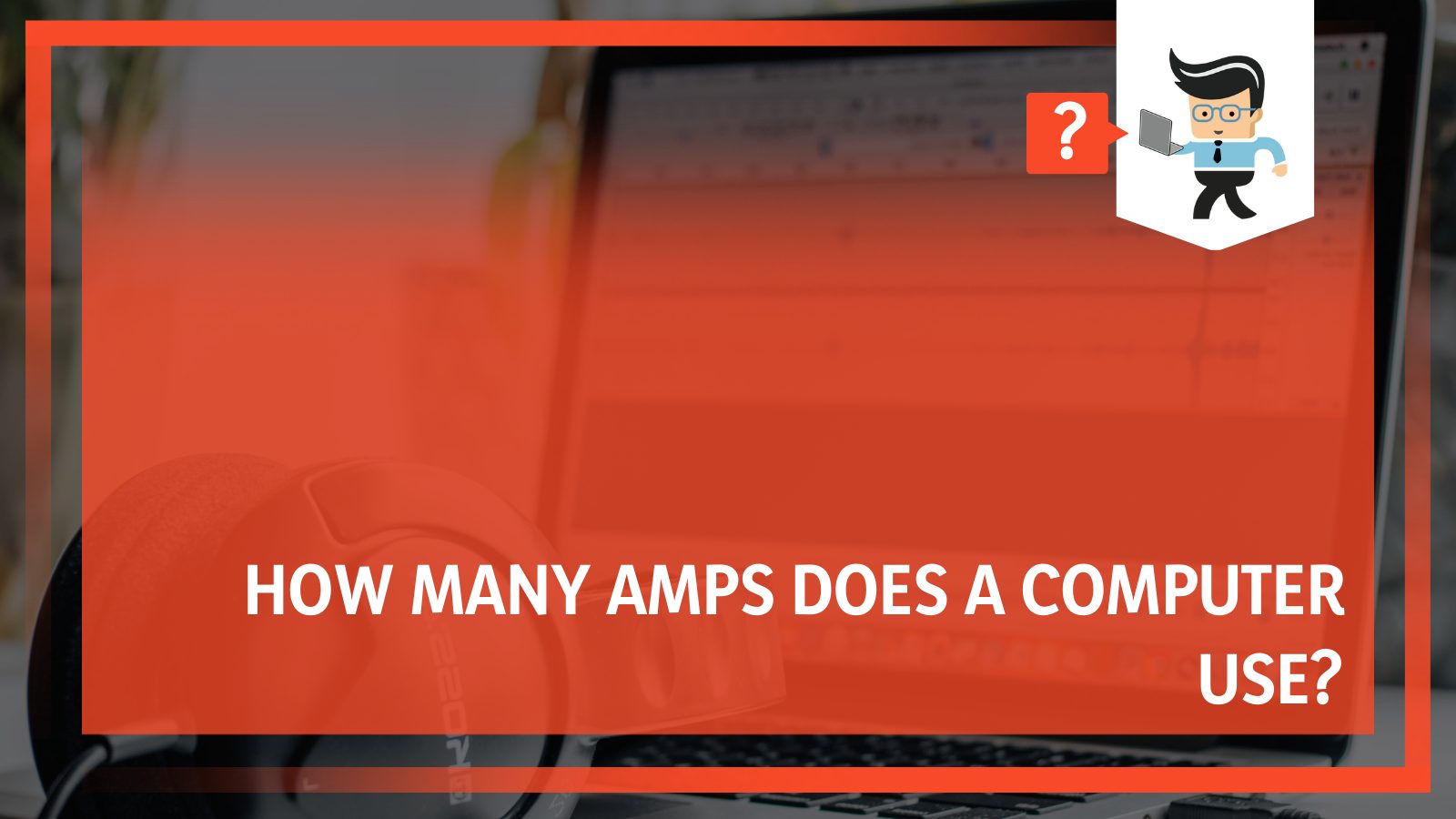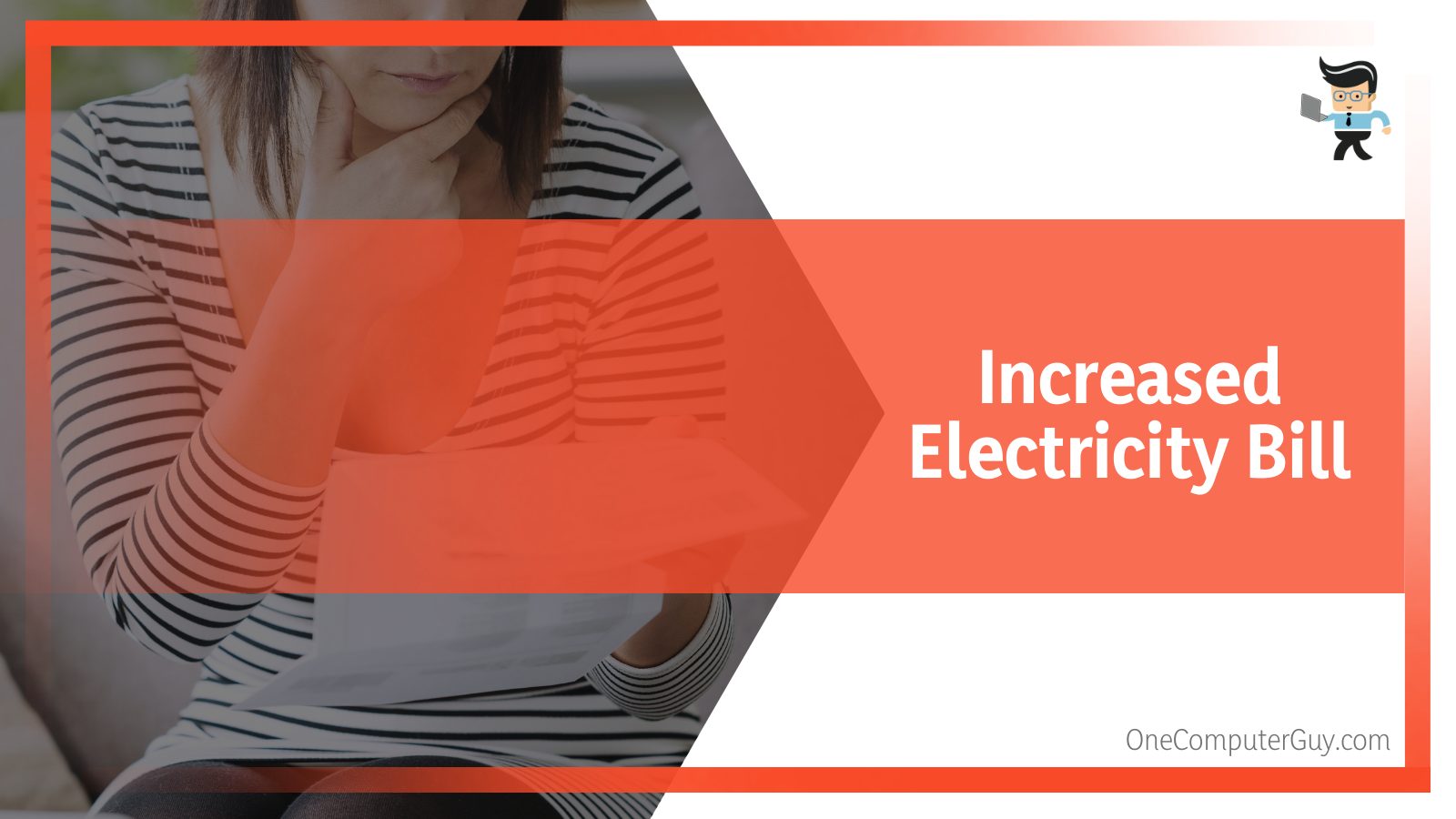How many amps does a computer use is one question you’re bound to ask if you’re a PC builder or if you’re simply worried about your electricity bill. While the amp of a computer depends on the number of components inside it, many computers use between 0.41 to 6.25 amps.

However, this usage stat isn’t set in stone so you’re sure to find computers that use more than 6.25 amps.
In this guide, we’ll be providing you with the answer to this question while explaining the various factors that can affect a computer’s amp usage.
Contents
What Number of Amps Does a Computer Use?
A typical PC will use about two amps, but this number can rise higher depending on the type of PC you have as a gaming computer is sure to use more amps compared to a normal laptop. Computers utilize different amounts of amps, depending on a wide variety of factors.
A typical computer contains multiple electrical elements, such as the fans, CPU, memory, etc. All of these components require electricity to work properly and the more components you have in your system, the higher your power supply rating would be.
– Computer Amperage Calculator
You can get a rough calculation of the amps used by your computer by dividing the number of watts your system uses by the number of volts supplied in your area.
Let’s assume you’re using a gaming computer, the wattage you’d get will depend on how your rig is set up, the tasks you use your PC for, and the amount of time you take up using your PC.
For instance, a gaming computer with multiple monitors, RGB mouse, keyboard, and speakers is sure to use more watts than a basic gaming computer.
Also, if you play high-intensive games in 4K, your wattage draw is likely to be more than a person who’s just using their PC to surf the internet. On the voltage side, your country is the major determinant of this element. Voltage isn’t something you can control so you don’t have a way to supply a higher or lower voltage to yourself.
To find out the amount of voltage you use in your country, you can simply run a Google search and you’d be able to run your calculations with ease. However, we estimate that most computers used for gaming draw about 300 to 600 watts on average. And if you divide that by 120 volts, you’ll get an average of 2.5 to 5 amps.
– Watts and Amps
As we’ve mentioned earlier, your PC parts and usage significantly contributes to the amount of wattage you use. You may have heard that your PSU’s capacity is what determines the number of watts your computer can use. However, this notion is untrue.
For instance, if your PSU has a capacity of 400 watts, that doesn’t mean that your computer will use up to 400 watts. What it means is that your PSU can supply a total of 400 watts and won’t exceed that.
With that being said, here’s a table showing the number of watts common PC parts use so you can easily calculate the amount of amp your computer is likely to use.
| Parts | Wattage |
| High-End Motherboard | 40 to 80 watts |
| High-End GPU | About 20 watts when idle and up to 260 watts when at full load |
| Highest End GPU | About 53 watts when idles and up to 350 watts when at full load |
| AMD eight core processor | 95 to 125 watts |
| Intel Core i7 processor | 65 to 150 watts |
These PC components are the most power-consuming parts. Other components such as HDD, SSD, and RAM don’t use as much wattage. For instance, a typical DDR3 memory uses about three watts only.
– Printer Amps
Besides your computer’s internal components, the external peripherals you use, such as your modem, printer, and monitor, will also contribute to the amount of energy your PC will consume.
So if you’re wondering how many amps does a PC monitor use or the number of amps a printer uses, here are some averages that can answer your questions.
One speaker uses about one amp, a fan uses about 0.3 amps, a typical monitor takes up 0.25 amps, and a printer needs an average of 0.5 amps. Summing all of these up can provide you with a rough idea of how much amp your computer uses.
– Computer Types and Their Average Amperage
As we’ve mentioned earlier, different computer types are bound to produce different amperage draws. Below are some averages used by the three general types of computers:
Most desktop PCs feature a printer, monitor, mouse, and other peripherals that bring their amp rating to an average that stays between 0.25 and 2 amps. However, this rating is for basic desktop computers.
If you’re adding more fans, RGB lights, high-resolution monitors, RGB mice, and more to your setup, you’re likely to get a higher amp rating.
Laptops were initially built for portability and that holds true in the amp department. Since they come in smaller packages, they offer more energy efficiency than their desktop counterparts. While their effectiveness is close to what you get on a desktop, they use an average of less than one amp per hour.
Gaming computers are generally known to be power-hungry machines. The reason is that they feature powerful hardware that requires more power thanks to the different gaming apps. A typical gaming machine can use up to six amps per hour, especially if you’re using a high-quality GPU that needs to be connected to a highly-rated power supply unit.
However, while gaming desktop PCs are sure to use more energy than their laptop counterparts, the difference between them and typical desktops and laptops is quite significant.
– Determining the Amount of Energy a Computer Consumes
The amount of energy consumed by your PC is determined by two main factors. For this reason, every computer is bound to have different amp ratings. Let’s take a look at these factors so you’ll have a better understanding.

Components and Configuration
Computers come in varying configurations and the higher the configuration, the more power your computer is likely to consume. Your computer’s configurations are often dependent on your needs, budget, hardware availability, and more. Most people will buy low-end PC for personal usage since they won’t be doing complex tasks or playing high-intensive games on them.
On the other hand, those who are looking to use their PCs for professional tasks or gaming activities will look for computers that are on the higher end. Companies, organizations, and offices that perform many different internet-based operations will opt for nothing but the latest and best PC generations.
The general notion here is that a basic hardware setup will require less power when compared to a system with a higher profile. So if you’re a writing professional who doesn’t utilize video or photo editing tools, you won’t need a system with a decked-out profile, but a graphic designer, videographer, or animator would.
Therefore, the writer’s computer is bound to use less power when compared to the animator or videographer’s computer. In the same vein, gamers tend to go for excellent builds and higher performance, which means more power consumption when compared to regular users.
User Behaviors
The time you spend using your computer is another factor that contributes to the overall energy your computer consumes. If you use your computer for eight hours in one day, you’re going to consume more power than a PC that works for just an hour a day.
Keep in mind that your computer still needs to utilize power when in standby mode. Many people have the misconception that computers draw in no power when in standby mode; this notion is false. The energy your PC consumes on standby may be a lot smaller than when it’s busy, but it still consumes power.
– Power Consumption Between Desktops and Laptops
When people argue about laptops vs desktops, the points they touch on often include usability, portability, price, performance, repair cost, etc. But many people often overlook the rate of energy consumption between both computer types.
Thanks to their smaller form factor, laptops do not demand as much power as their desktop counterparts. In fact, their power usage is about 80 percent less when compared to desktops.
Laptops are also more power efficient since they have smaller PSUs. However, gaming laptops that consume higher amounts of power may consume as much power as desktops that consume lower amounts of power.
What Is the Importance of Knowing the Amperage?
Knowing the number of amps your computer uses can save you a lot of trouble when it comes to helping you avoid malfunctioning hardware parts, electric circuit damage, and increased electricity bills. Your power supply unit, otherwise known as PSU, is the main power source for your PC.

The amount of power your computer gets will depend on the amount of power your PSU can supply. If your computer’s demands are more than what your PSU can handle or if your PSU supplies more power than your PC can handle, you’re likely to experience a few implications. Some of the most significant issues you can expect include:
– Part Malfunction
If you don’t know the amount of power your PC is supposed to consume and you purchase a PSU that’s supplying less or more voltage, you’d be putting your computer at risk.
According to the law of electronics, if your computer pulls in more power than your PSU can supply, the output voltage will go down to zero and the components using this voltage will stop working as they’ll be overloaded.
Now most modern PSUs are designed to discover this overload problem and shut themselves down for a small amount of time.
However, some PSUs don’t have this technology and will continue going on and off repeatedly, which can cause the unit itself to die and also kill the components of the devices it’s connected to.
– Electric Circuit Damage
If you have an inexpensive PSU or if your PC is one that requires more power than your PSU can provide, the PSU’s capacitor could end up compromised, which could in turn damage your computer’s motherboard, PSU, and other components you may have connected to the PSU.
The unit itself may even catch fire, depending on how low the quality is, and if the fire isn’t contained immediately or properly, it could end up damaging your entire rig and you’d also have to deal with the health complications that may come up due to burnt plastic smoke.
Your home could also be in danger depending on where your PSU is located and whether or not the PSU fans have been automatically disabled. Therefore, always make sure to get a PSU with good quality for your rig.
– Increased Electricity Bill
Knowing the amount of power your PC is drawing can help you determine the amount you should expect to be added to your electricity bill. While most gaming PCs won’t add much to your electricity bill, it’ll be a different story if your PC is decked out with a lot of bells and whistles.

Depending on the area you stay in, you may have to be paying a huge sum for electricity every month. For instance, while Americans pay an average of 15 cents per kilowatt, Germans pay about 37 cents per kilowatt.
Conclusion
That’s all on the amount of amp a computer uses, how to calculate amps, and the relationship between amps, wattage, and voltage.
Here are some pointers to keep you on track when deciding to measure the number of amps utilized by your PC.
- PSUs do not determine the number of watts your PC can draw.
- You can calculate amps by dividing the amount of watts your computer uses by the amount of voltage supplied by your country.
- The wattage rating for a PSU simply denotes the maximum amount of possible power the PSU can supply not the amount of power used by your PC.
- Make sure you choose high-quality PSUs that can supply the correct amount of power to your PC to avoid damaging your PC components.
Most computers won’t use more than 700 watts of power, especially if they’re just basic setups. Therefore, we estimate that typical gaming PCs won’t use more than six amps, but you should use our calculation method above to determine the number of amps used by your PC.
References
- https://www.electricalsafetyfirst.org.uk/guidance/safety-around-the-home/home-appliances-ratings/
- https://www.it.northwestern.edu/hardware/eco/stats.html







